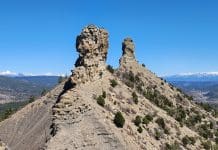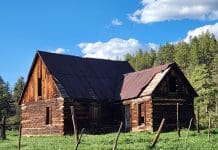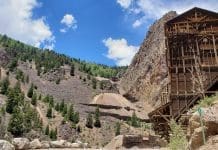The Museum of the Mountain Man is a worthy stop on your trek across Wyoming.
Located in Pinedale, this region of Wyoming was the epicenter of the Rocky Mountain fur trade, which supplied beaver pelts for the fashionistas of the eastern United States and Europe in the 1800s.
This museum is based on the lives of the men profiled in the Leonardo DiCaprio movie called The Revenant.
We came across this museum during our travels in Wyoming and decided it was worth a stop.
It turned out to be a great little museum with fascinating details about the area prior to its development.
Museum Exhibits
The museum features several permanent exhibits that detail life in the Pinedale region during the era of the Mountain Men.
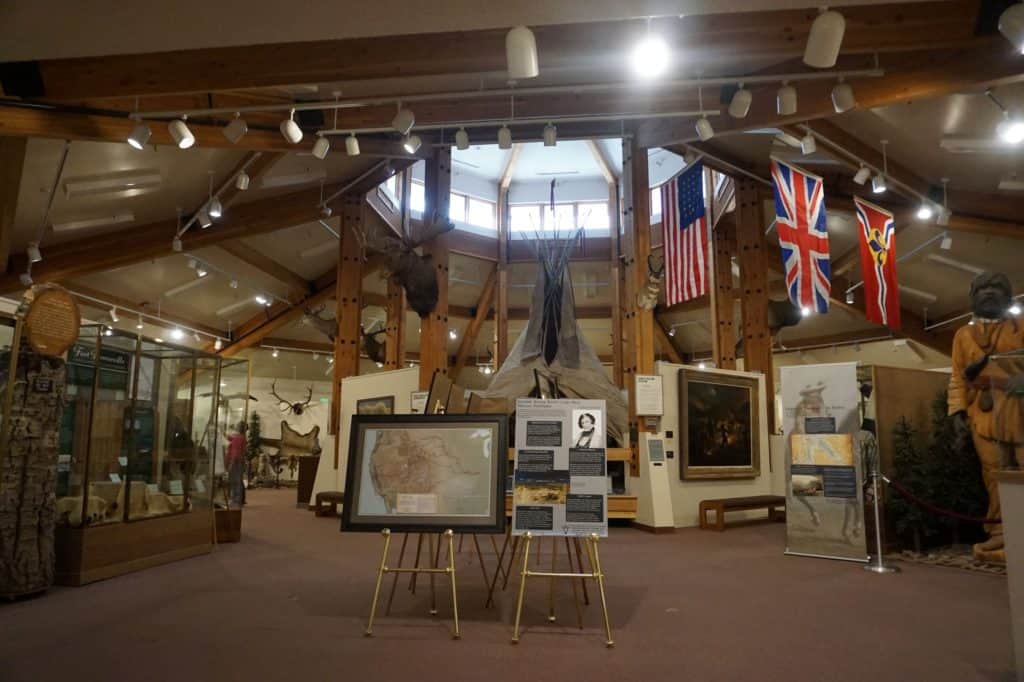
The center of the museum features a Native American tipi that shows how Native Americans lived during this time period. Many of the Mountain Men became friendly with Native Americans, including marrying some of the Native American women.
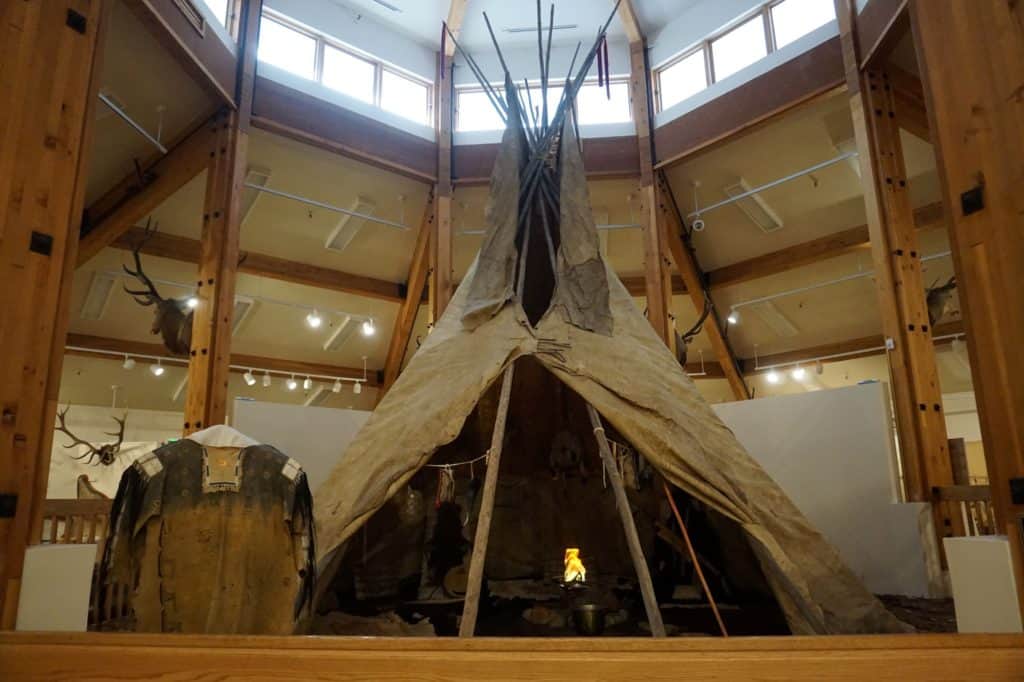
A large mountain man will greet you as you enter the museum.
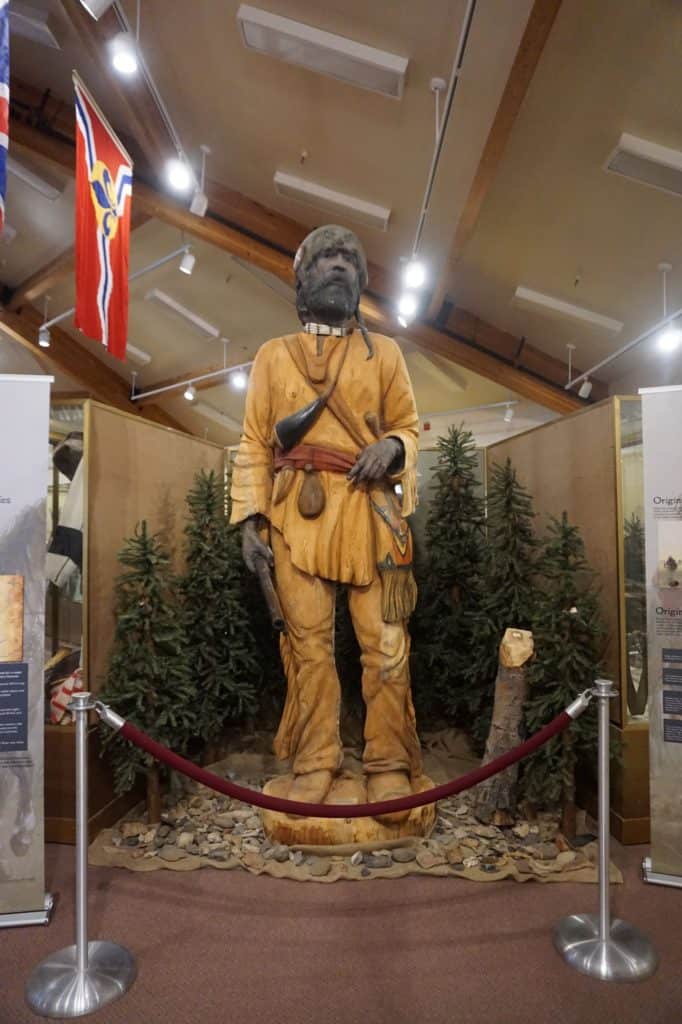
Beaver Fur Trade
The primary goal of a mountain man during this period of the 1800s was to trap beavers for their fur pelts.
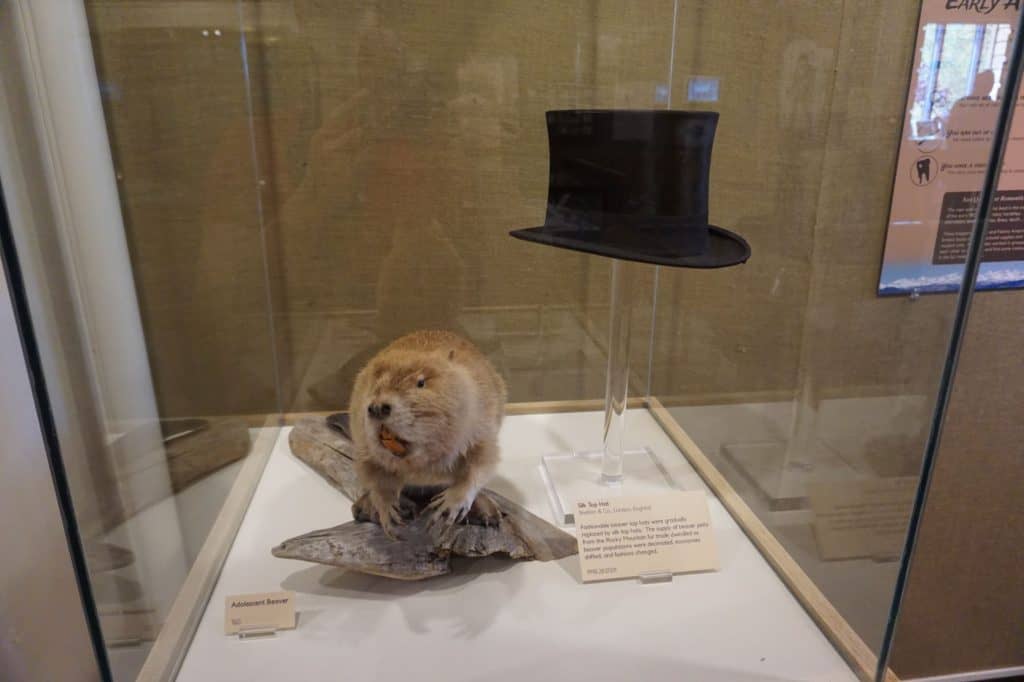
Beaver fur pelts were used to make top hats for the fashionable men of this time.

The museum delineates the steps involved in making a beaver’s pelt into a top hat.
Making a single hat generally needed 4 pounds of beaver wool.
The beaver fur was first removed with a razor blade by the fur trapper.

Once the beaver wool was obtained, the wool was felted by combining them into a fluffy mass, steaming them, and flattening and binding the beaver wool fibers together to form a conical shape.

This was shaped into a hat, which underwent further processes to develop it into the black top hat shape popular with wealthy Americans and Europeans.


The final product is the black top hat that many are familiar with as the fashionable headdress of this era.

The museum also has a display of the locking hat box that was used to protect these fashionable hats.

Life as a Fur Trader Mountain Man
The display explains life details for mountain men during this period. Figures represent their daily lives, interactions with each other, and local Native American tribes.



The exhibit examines the roles of mountain men and details the supplies they took with them while trapping beaver pelts.

Most mountain men heavily relied on horses for exploring the region and carrying beaver pelts back for sale. The museum gives special attention to the horses’ role during this era.

Of special importance to the mountain men were their guns.
The Museum of the Mountain Man has a large gun exhibit that features many unique weapons from this time period.


The mountain men closely aligned with some Native American tribes but also battled with others.
Numerous exhibits present details about these interactions and life as a Native American.

The mountain men were exploring a new area that included many wild animals, including elk, bighorn sheep, grizzly bears, wolves, foxes, bison, mountain lions, and more.
Some of these animals served as a food source for the mountain men, while others were responsible for killing mountain men explorers.

This display features a true attack by a grizzly bear, which frequently happened to the mountain men.
This display shows that a grizzly bear attacked mountain man Hugh Glass, and his companions left him for dead.
He somehow survived the attack and was able to tell the tale.

Mountain Man Rendezvous
Gatherings, or rendezvous, during this period in the 1800s were a large part of the mountain men’s experience.
They gathered to trade goods and tell tales of their experiences.
The Museum of the Mountain Man hosts Green River Rendezvous the second full weekend of every July. To learn more about the mountain man experience, plan to attend one of the rendezvous!

Special Exhibits at the Museum
The downstairs of the Museum of the Mountain Man has a special exhibits section, along with a children’s display area.
The museum had an interesting presentation on barbed wire patents with examples from the area from the 1800s and 1900s.


The downstairs of the Museum of the Mountain Man also included hands-on displays for children.

Museum of the Mountain Man Location

The museum is located in a standalone building in Pinedale, Wyoming.
We’ve also visited some other interesting, or (some may consider) weird museums in our travels, including the Museum of Clean, Colorado Museum of Prisons, Glore Psychiatric Museum, American Museum of the House Cat, and others. They are all fascinating!

The Museum of the Mountain Man also has an outdoor exhibit area featuring historic cabins and other artifacts from the immediate Pinedale region, including this historical wagon used by early pioneers in the area.

The address of the museum is 700 E Hennick in Pinedale, Wyoming. Follow the directions using the Google Map below.
If you’re traveling with an RV, as we were with our Airstream, there is plenty of available RV parking in the parking lot of the museum.

